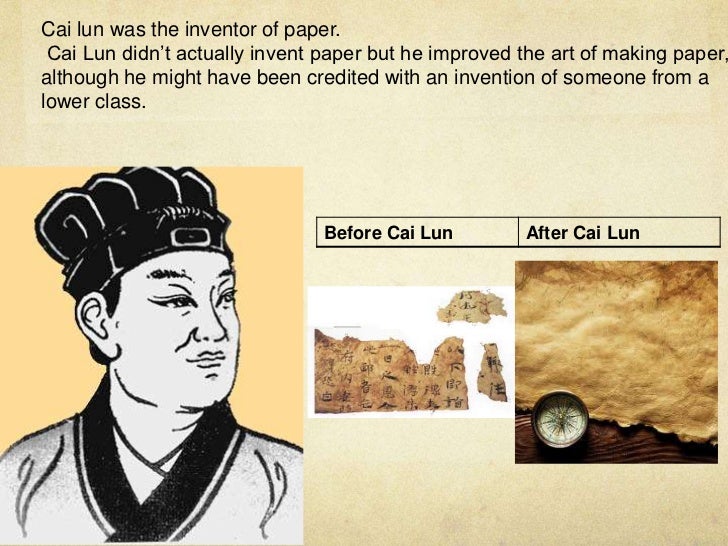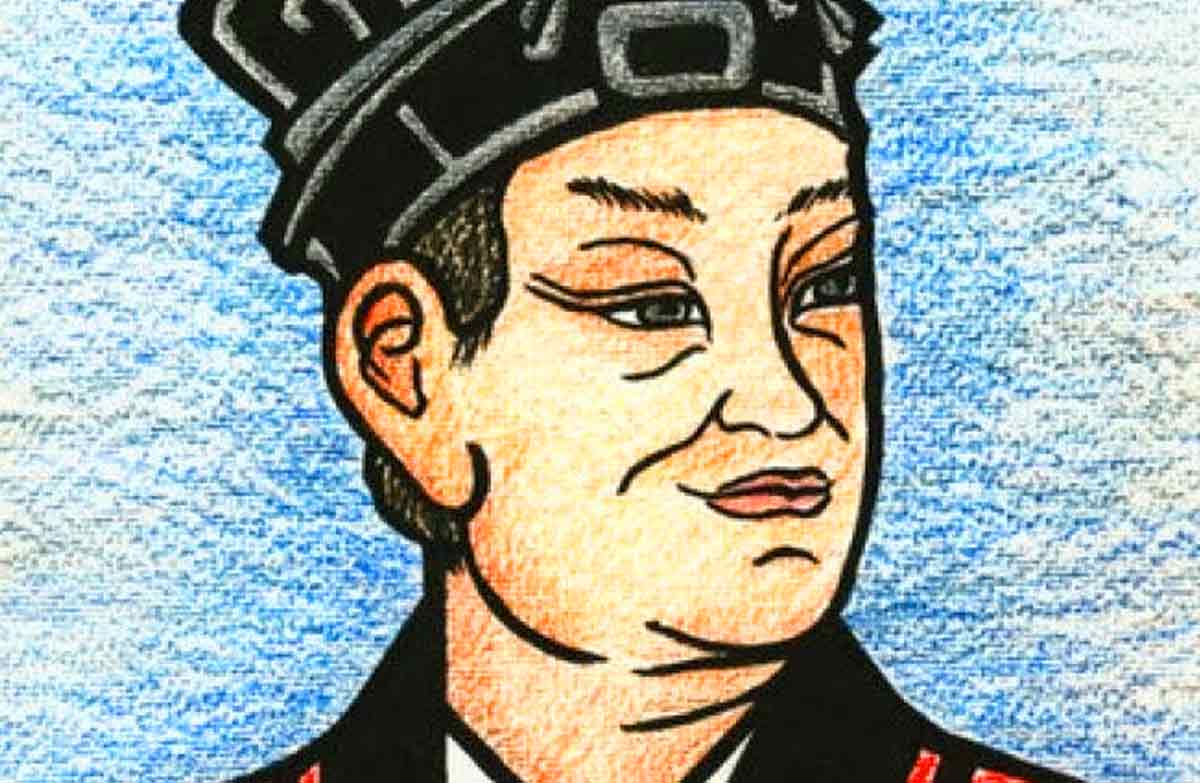Cai Lun, a name often not well known to modern generations, is one of the most significant figures in history. Revered as the inventor of paper, his contributions to the world have had an enduring impact on the development of civilization. Although much of his life remains shrouded in the mists of time, Cai Lun’s invention changed the course of human history, revolutionizing communication, education, and the spread of knowledge. In this article, we explore the life, legacy, and historical significance of Cai Lun, the man who invented paper.
Who Was Cai Lun?
Cai Lun was a Chinese eunuch, official, and inventor during the Eastern Han Dynasty. He is most famously credited with the invention of paper in the year 105 AD, although there were earlier forms of paper-like materials used in China and other cultures. Cai Lun’s development of paper, however, transformed the medium of writing, making it more accessible and efficient compared to previous materials like bamboo, silk, or wooden tablets.
Though Cai Lun’s role in the invention of paper is well documented in Chinese historical texts, much of his life outside of this achievement remains a mystery. Most of what is known about him comes from historical accounts like the “Book of the Later Han”, which offers insight into his work, his position in the imperial court, and his lasting impact on Chinese society.
The Invention of Paper

1. Early Writing Materials
Before the invention of paper, writing in ancient China was done on materials such as bamboo, silk, and wood. Bamboo was particularly common, but it was bulky, heavy, and difficult to work with. Silk, while more portable, was costly and fragile, making it unsuitable for widespread use. Wood, too, was cumbersome and not particularly easy to write on.
In contrast, Cai Lun’s innovation in creating a lighter, more flexible material would pave the way for paper’s use in both the East and the West. According to historical records, Cai Lun combined various plant fibers, such as bamboo, hemp, and rags, with water and a variety of natural substances to create a pulp that could be pressed into thin, flexible sheets.
2. Cai Lun’s Paper Production Process
Cai Lun’s process for making paper was remarkably simple but innovative. By combining fibers from plants such as hemp, bamboo, and the inner bark of trees, he was able to create a pulp mixture. This pulp was then spread out on a flat surface to dry. The final product was much thinner, smoother, and lighter than any writing material previously available. The result was a medium that was not only cheap and easy to produce, but also durable and lightweight.
Before Cai Lun’s invention, paper-like substances were used in different regions, but they lacked the refined qualities of the paper we know today. Cai Lun’s method allowed paper to be produced on a large scale, making it available to a much broader audience. As a result, paper quickly spread throughout China, becoming integral to daily life, education, and communication.
The Historical Context of Cai Lun’s Time

Cai Lun lived during the Eastern Han Dynasty, a period of both prosperity and turbulence in Chinese history. During this time, the Han Dynasty was at its peak in terms of cultural and scientific advancements, and the country was beginning to see great strides in both technology and economy.
Cai Lun himself was a eunuch in the imperial court, working in the imperial palace. His position gave him access to both the political power and the resources necessary to undertake such an ambitious project. As a eunuch, Cai Lun was also freed from the typical responsibilities of family life, allowing him to dedicate much of his time to the imperial administration and his various innovations.
While Cai Lun’s invention of paper was a significant achievement, it was by no means the only contribution he made to Chinese society. He also worked on improving the quality of silk and created various tools and agricultural devices during his time in the palace. Despite these accomplishments, however, it is his invention of paper that has ensured his lasting legacy in history.
The Impact of Cai Lun’s Invention
1. Revolutionizing Communication
The invention of paper by Cai Lun fundamentally changed the way people communicated. Prior to his innovation, communication over long distances or between scholars and officials was hampered by the inefficiency and cost of available materials. Paper made it much easier and cheaper to produce books, documents, and letters, which in turn allowed knowledge to spread more quickly and widely.
The spread of paper across China enabled scholars and bureaucrats to record and disseminate information more efficiently, creating a lasting legacy in fields ranging from science to governance. Paper also contributed to the further development of Chinese calligraphy and literature, helping to preserve cultural traditions.
2. The Global Spread of Paper
Although Cai Lun’s paper was initially developed in China, its impact soon spread to other parts of Asia and beyond. In the 8th century, during the Tang Dynasty, paper-making techniques spread to Central Asia and the Middle East via the Silk Road. By the 11th century, paper was making its way into Europe, where it replaced parchment and vellum as the preferred medium for writing.
The development of paper had a profound effect on global culture, contributing to the Renaissance in Europe, the spread of printed books, and the creation of public records and archives. Without Cai Lun’s paper, it’s difficult to imagine how quickly and effectively knowledge could have been transmitted, particularly with the advent of printing technology centuries later.
3. Cultural and Educational Advancements
The availability of paper also played a critical role in advancing education. For centuries, the written word was limited to those who could afford expensive materials like silk or bamboo. With the advent of affordable paper, education could reach a much wider audience. Textbooks, religious texts, and scientific manuals were produced in greater numbers, allowing for the development of literacy on a larger scale.
The use of paper also encouraged the development of books and printed materials in other cultures, helping to establish systems of education, documentation, and preservation of knowledge in civilizations around the world. Libraries and archives, filled with books and scrolls on paper, began to flourish in both the East and the West.
The Legacy of Cai Lun
Today, Cai Lun‘s invention of paper is considered one of the four great inventions of ancient China, alongside the compass, gunpowder, and printing. His development of paper is not just a technological advancement; it is a cultural landmark that changed the trajectory of human history.
Cai Lun’s paper-making process laid the groundwork for the modern paper industry, which continues to shape the way we communicate, record information, and preserve knowledge. Although paper has evolved significantly since Cai Lun’s time—becoming more refined and produced through industrial methods—the basic principles of Cai Lun’s invention remain at the heart of paper production today.
Cai Lun in Popular Culture
While Cai Lun is a well-known figure in Chinese history, his recognition outside of China has been less prominent. Nonetheless, his legacy is celebrated in various ways. In China, he is often depicted as a cultural hero and is frequently referenced in Chinese literature, history books, and educational material. His invention is considered so significant that some cities in China have erected statues in his honor, and museums feature exhibits dedicated to his life and achievements.
In the wider world, his role in the invention of paper is often cited in discussions of technological innovation and the history of writing. His invention is sometimes celebrated in historical documentaries, books, and global exhibitions on the achievements of ancient China.
Conclusion
Cai Lun’s invention of paper was a groundbreaking achievement that had a far-reaching impact on civilization. By creating a medium that was both affordable and efficient, he revolutionized communication, education, and the preservation of knowledge. The lasting influence of his work can still be seen today, as paper continues to be one of the most widely used materials in the world.
Although Cai Lun’s life was relatively modest, his legacy as the inventor of paper remains one of the most significant contributions to human progress. His invention paved the way for the development of written language, literacy, and the spread of ideas, leaving an indelible mark on the course of history.



